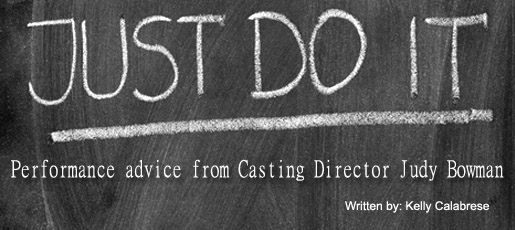Acting is a complex and multi-faceted craft, requiring both imagination and technique. Whether you’re a beginner or an experienced actor, there are certain tips and tricks to help you achieve a great acting performance.
Overall, the steps when preparing for a role is to understand the story, setting, character background and objectives; this will help you build your character in order to create truthful moments. It’s also important to stay in the moment during all of your performances; this means making sure you listen carefully and remain present at all times. Some acting coaches suggest that actors should use their environment in order to bring life into their characters, such as using objects around them as props or even taking physical notes from the space they are performing in. We’ll explore this in a future article so be sure to follow DirectSubmit NYCastings for updates!
 TIPS and TRICKS
TIPS and TRICKS
Be Authentic and Honest in Your Portrayal of the Character
Authenticity means that you must commit yourself to understanding who the character is and their motivations, both positive and negative. It also means conveying these traits in an honest way so that viewers truly believe in your performance.
To achieve authenticity, you need to do extensive research into your characters. Yes, this is a “need”, not a “should”. This includes analyzing how they interact with other characters, their relationships with others and what drives them emotionally. Understandable motives are key because they make characters relatable while still making them unique. Additionally, in my opinion, you should draw upon personal experiences when playing a role as this brings an added layer of realism to it. Staying true to a character’s essence will help keep performances believable and entertaining for audiences as well as help create memorable roles for actors.
I want to add something real quick – when I say you should “draw upon personal experiences”, you can also think about how you would react from future experiences. Example: If you have a crying scene, you may want to think about burying a loved one (who is currently still alive) – in other words, if they just passed, how would you feel? Use that.
Practice Active Listening and Be Present in the Scene
The world of acting can be a daunting one, as you must learn to master the craft of embodying characters and speaking lines with conviction. But there is one key element that often gets overlooked in the process — active listening. Active listening refers to truly being present in any given scene and responding authentically to other actors’ words and actions. By mastering this skill, you can become more convincing when performing on stage or on screen.
The art of active listening is an essential part of any successful actor’s toolkit. It involves hearing what another person is saying, understanding it, processing it and then providing an appropriate response that reflects your character’s state of mind. When done correctly, active listening can make a performance feel organic and natural rather than forced or unnatural.
If what I said up there blows your mind, wait til you hear this… Active listening is a two-way street. The other person should also listen to you. Unfortunately, there may be plenty of times where active listening is a one-way street. If you’re willing to listen, but your scene partner isn’t, you may have to make some tough choices. Actors and directors fighting on set is nothing new, but it can be prevented by listening.
Make Bold and Specific Choices But Also Be Open to Adjustments From the Director
When it comes to acting, you’ll want to have the courage to make bold decisions. Taking risks and choosing specific moments is essential for creating believable characters that don’t feel like carbon copies of the same archetype. To do this, you need to trust your instincts and have an open mind when it comes to taking direction from the director.
Making confident choices requires you to fully understand the scene and what emotions you’re trying to portray. Researching background information on the character, understanding their relationships with others in the story and recognizing how their actions will affect those around them can add depth to a performance. It’s also useful for you to remember key phrases or ideas related to your characters in order to stay focused while performing.
Use Sensory Detail to Bring Your Performance to Life by Imagining How Your Character Smells, Tastes, Feels and Sounds
Sensory detail is an important element of acting that can help to bring a story to life. It adds vividness and realism, allowing the audience to feel as though they’re in the scene. Sensory detail involves all five of the senses: sight, hearing, taste, touch and smell. You can use these senses to create an environment for your characters that are both believable and impactful.
For example, if a character is struggling with grief, an actor might add details such as heavy breathing or a trembling voice in order to convey emotion. By using sensory detail rather than simply expressing dialogue, it becomes easier for viewers to empathize with what the character is feeling in any given moment. In addition, sensory detail helps you develop greater control over your emotions during a performance which allows you to deliver powerful performance without becoming overwhelmed by your own feelings.
[Author’s Note]: I had to read what I wrote up there twice because sensory detail, while it seems logical and easy from the way I wrote it, is in fact, very difficult to achieve. But I know you can do it!
Take Risks and Try New Things
This will help you to grow as an actor and try different approaches to your performance. Not to be confused with making bold choices as you read earlier in this article.
You should always strive to challenge yourself in order to become better at your craft, so taking risks is essential. When the opportunity arises that tests your limits or offers something unique and out of the ordinary, then you should consider taking the plunge. You may also want to break away from certain characters you usually play or genres you‘re used to working in. This could help you boost your profile and prove that you can successfully tackle any role thrown at you.
There are actors that even though they’re playing different characters in a different productions, they’re really playing the same character, just a different script. If you get too comfortable in a certain type of role, you may get bored and wonder why you’re still an actor. I’m here to tell you that there are so many different types of characters that you should never be bored. Take on the risk of playing a different role and get out of your comfort zone.
Be Versatile and Adaptable, Be Open to Change and Willing to Try Different Interpretations of a Scene or Character
When I was doing a voice over for food that was going to be played over the loud speaker of a supermarket, the director asked me to say the same exact five word line three different ways. But seriously, how many different ways can you say ONE short line? Well, it turns out, many different ways. Even though this was a voice over, I was able to do it in two different accents, changed my voice to be more nasal sounding and accentuated different words.
That’s just a tiny example of what you could do regarding being versatile and adaptable. One of the greatest advantages of being an actor is the fact that there are endless possibilities of how you can portray a character or run a scene.
Learn to Trust Your Instincts and Let Go of Self-Doubt — It Can Be a Big Obstacle in Delivering a Great Performance
Trust your instincts and let go of self-doubt — it’s a message that actors are familiar with, but one that can be applied to all aspects of life. We’ve established that acting is about taking risks and trusting yourself in the moment. To do so requires an unwavering faith in your own ability, despite any doubts or fears you may have.
To be successful as an actor, you must believe that you have the talent to succeed and understand that any fear or self-doubt will only hold you back. You must choose to trust your instinctive reactions while on stage or in front of the camera, instead of relying on conscious thought or overthinking what comes next. The best way to gain confidence is by doing — learning through experience and developing a comfort level with taking risks.

Use Subtext to Add Layers to Your Performance
Subtext is the unspoken thoughts and emotions that are happening beneath the surface of the dialogue. To me, adding subtext is like playing a game of Chess – you have a plan happening on one side of the board, while another underlying plan happening on the other side of the board, which you’re hoping will be undetected. The undetected plan is the subtext – it’s not written, yet it exists.
By using subtext, you’re able to add layers to your performance, making them more dynamic and compelling for an audience. This creates a connection between actor and character that goes beyond just words on paper.
One of the greatest examples of subtext can be found in the classic television series Xena: Warrior Princess. The characters that had subtext are Xena and her loyal sidekick, Gabrielle.
Xena and Gabrielle’s relationship is one of the most iconic friendships in television history. Not only did they share a bond of loyalty, trust and friendship but many fans believe there was also an underlying romance between them. The showrunners never confirmed whether Xena and Gabrielle were more than just friends, leaving it up to interpretation.
The two characters had more than platonic chemistry when they interacted with each other on screen. Their body language spoke volumes as they often hugged, touched hands or shared meaningful glances with each other. They even went as far as having their own secret handshake! This strong connection between them sparked much debate among viewers about the true nature of their relationship and opened up conversations about LGBTQIA+ representation in television long before it was widely accepted by mainstream media.
Check out Xena and Gabrielle’s bath scene to see subtext.
What shows have you watched that had subtext? Follow DirectSubmit NYCastings and leave a comment.
Work on Your Vocal and Physical Techniques
You must learn how to use your voice effectively in order to express the emotions of your character. This means learning the basics of projection, pitch, enunciation and phrasing. Meanwhile, physical techniques involve using posture and body language to convey emotion and character motivation. By mastering both vocal and physical techniques, you’ll be better able to fully embody your character.
Good vocal technique encourages clear articulation while still allowing for personal expression and creativity when interpreting dialogue.
Be Professional, Respectful and Punctual
No matter if you’re on set, in rehearsal or on a Zoom call, being professional, respectful and punctual are not only important traits to have but essential. Professionalism is key in the workplace as it creates a good impression on those around you. Respectful behavior should always be practiced and include treating your co-workers with respect and dignity at all times. Punctuality is also essential, as arriving late or leaving early can create doubt in the minds of others that you do not take your job seriously enough or lack commitment. Ensuring that you’re organized and well prepared are added benefits of being professional.
It’s no secret that Axl Rose of the rock band Guns N’ Roses is usually late to showing up on stage. Not only does this frustrate his band mates, but also the audience! Knowing that this is a habitual problem, Axl creates anger and anxiety. Even if he puts on a great show, the audience is left to fend for themselves after missing the last train home.
And this is a great way to introduce you to my favorite Guns N’ Roses song, Sweet Child O’ Mine. Who’s with me?! 







